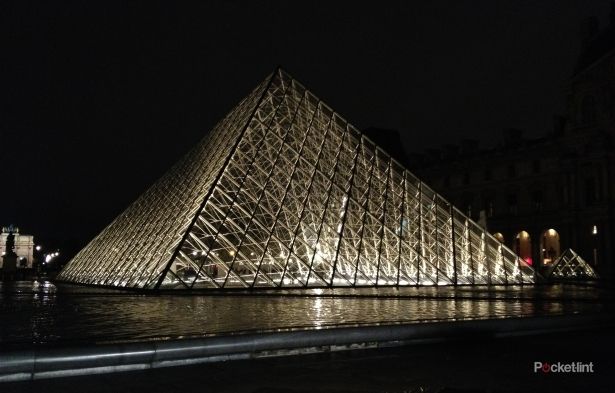Toshiba has switched on the first part of its LED Louvre project, literally lighting up the world famous museum in a ceremony attended by Pocket-lint.
The Japanese company showed off the first stage of its renewal of the external lighting at the site on a wet and cold Tuesday evening in Paris, with 350 LED light fittings being switched on at the museum's exterior.
Eventually 3,200 energy efficient LED lights will be glowing at the Louvre - replacing the 4,500 high energy xenon lamps which are currently used. When the job is fully completed, Toshiba says there will be a huge 73 per cent reduction in power as a result of the environmentally-friendly LEDs, down from 392,000 to 105,000 watts-per-hour.

To give you some sort of reference as to just how the LED technology is helping to reduce energy; consider that the Toshiba GU 10 LED light with an 8.5 watts power is replacing a halogen bulb at more than four times this drain and that 17 8.5-watt xenon bulbs, with a combined power reading of 144.5 watts, can be replaced by 18 LED lights powered by just 4.6 watts.
The first part of the renovation, which Toshiba president Norio Sasaki and Louvre Museum President Henri Loyrette turned on saw the Pyramid, the Pyramidions and the Napoléon Cour bathed in LED light. The next stage is the lighting of the Cour Carrée in 2013. The partnership runs until 2023 and we're told that the LED lighting will also take its place alongside the likes of the Mona Lisa and the Venus de Milo inside the museum.

Francois Seguineau, VP of Toshiba's European lighting said: "Toshiba Lighting Europe’s success is rooted in a unique combination of a true start-up spirit and a rare historical expertise in the field of lighting.
"Amongst the most iconic challenges of the division to date is the Louvre project. Toshiba started to collaborate with the Louvre, one year ago, when no existing LED products could ensure a perfect retrofit
for its outdoor lighting.
"Toshiba Lighting and the European Division successfully tackled this technological challenge to help one of the most famous world monuments switch to energy-saving LED lighting solutions and adapt for the future."
Built on the grounds of a fortress built in the late 12th century under Philip II, the building was once the residence of Louis XIV. It has been a museum, and home of some of the world's most valuable artwork, for over 200 years.

